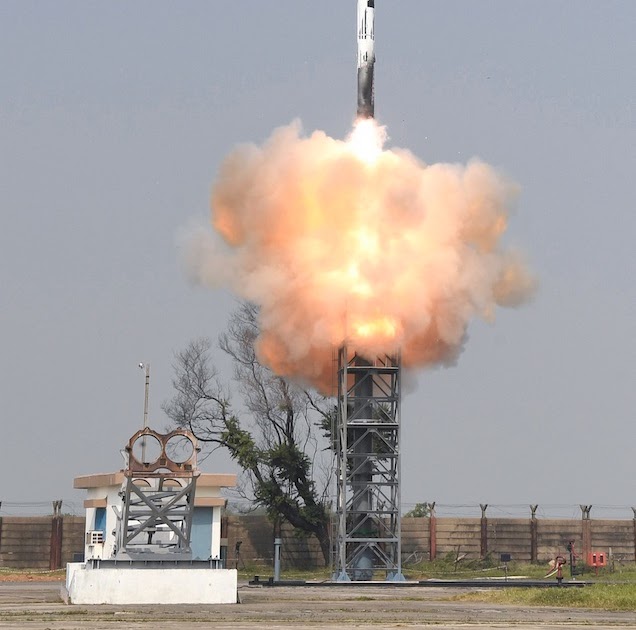
An upgraded version of the Indo-Russian BrahMos supersonic cruise missile was successfully tested from the Integrated Test Range (ITR) in Chandipur, off Odisha, on Thursday.
The launch was carried out by Brahmos Aerospace, a joint venture between the Indian Defense Research and Development Organization (DRDO) and NPO Mashinostroyeniya, the Russian rocketry agency that developed the Russian part of the BrahMos.
While the BrahMos was originally 50% built in India, the missile tested Thursday had an increased indigenous content of 70%, senior DRDO officials said.
In what the DRDO describes as a “playbook flight”, he announced that the missile was following its intended course and meeting all of its mission objectives.
“The highly maneuverable missile cruised at supersonic speed for its maximum range and all mission objectives were achieved. The missile was equipped with advanced indigenous technologies and followed a modified optimal trajectory for improved efficiency and performance,” said declared the DRDO after the flight.
The DRDO said the flight test was monitored by all sensors in the ITR range, “including telemetry, radar and electro-optical tracking systems deployed on the east coast and ships downstream.”
The BrahMos is one of the world’s first cruise missiles. It flies at a supersonic speed of 2.8 Mach (nearly 3,000 km/h), too fast for enemy fighters to intercept and shoot it down.
Conventional cruise missiles, such as the US Army’s Tomahawk, travel at subsonic speeds of 890 km/h, making them vulnerable to supersonic fighters.
In wartime, the unmanned BrahMos would be used in the early stages for pinpoint strikes on high-value targets – such as air bases, headquarters, key roads and railroads or logistics dumps – which are too heavily defended for manned fighters to attack.
Through incremental improvement and incremental testing, the BrahMos has become a key part of the hitting power of all three services. It is launched from all four dimensions: ground launchers, aircraft, surface warships and submarines.
The army operates four BrahMos regiments, including missiles programmed for “steep dive” attacks across India’s Himalayan borders. These missiles fly over high mountain ridges before plummeting to their targets at the bottom of the valley.
Each BrahMos regiment, which is a fully mobile entity with a command post, four missile launch vehicles and multiple missile carriers to carry its complement of 90 missiles, costs around Rs 2,000 crore. Each individual missile costs Rs 15 crore.
Even so, the military is on track to purchase two more regiments of these deadly missiles. As the missile was recently tested at a range of 400 kilometers, the 5andand 6andBrahMos regiments should be equipped with the longer range version.
The Indian Air Force (IAF) has also developed an aerial version of the BrahMos which is taken from the Sukhoi-30MKI fighter. A full squadron of 21 Sukhoi-30MKIs equipped to fire the BrahMos air-launched cruise missile (ALCM) is stationed in Thanjavur, Tamil Nadu. From there, long-range Sukhois can strike targets in the Arabian Sea, Bay of Bengal, or northern Indian Ocean.
During an exercise in May 2019, Sukhoi-30MKIs flew from Thanjavur to strike a target 3,000 km away with BrahMos missiles, refueling in mid-air on the way there and back.
This Navy atalso chose the BrahMos as the standard ship-launched cruise missile (SLCM). All navy frigates and destroyers are now built to carry the BrahMos in vertical-launched rounds – eight missiles in each frigate and 16 in each destroyer. BrahMos missiles are already carried by native Project 15B destroyers, but are alsobe integrated into the Talwar-class frigates being built in Russia.
BrahMos Aerospace has also offered its missiles to equip six Navy submarines that will be built under the 75-I project. In March 2013, a BrahMos was fired from an underwater pontoon, validating it as a submarine-launched cruise missile (SLCM).
BrahMos Aerospace was incorporated through an Indo-Russian Intergovernmental Agreement (IGA) and is named after Indian Brahmaputra and Russian Moskva. It is 50.5% owned by India and 49.5% by Russia, the Defense Ministry told parliament on May 9. 2007.
The MoD said the registered capital of BrahMos Aerospace was initially $250 million. This amount was increased by $50 million to cover the cost of developing the air-launched version of the missile.
New Delhi’s contribution of just over $150 million includes Rs 634 crore contributed by the military and Rs 370 crore contributed by the DRDO.







